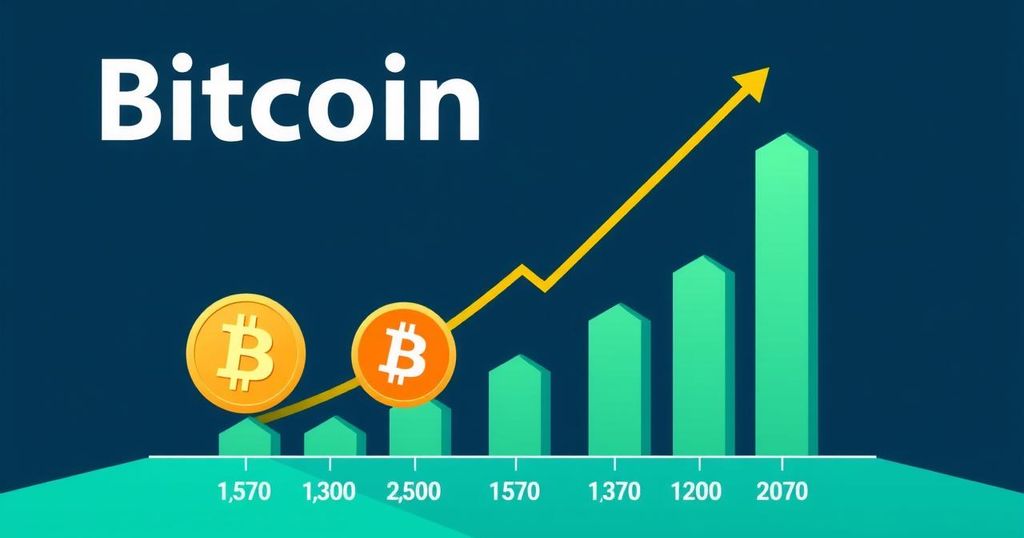Bitcoin Price Forecast Amidst Fed Rate Cut Speculations
Bitcoin has been unable to surpass the $86,000 resistance level following comments from Fed Chair Jerome Powell regarding interest rate cuts. Current market views indicate an 88% chance of unchanged interest rates. Analysts look for Bitcoin to reclaim support above $86,000 to aim for higher price targets, with significant areas of interest noted below this resistance. The potential future movements are highly dependent on macroeconomic indicators and market sentiment.
On April 16, Bitcoin (BTC) struggled to break the key resistance level of $86,000, particularly after comments from Federal Reserve Chair Jerome Powell dampened hopes for early interest rate cuts. Since April 9, BTC’s daily highs fluctuated between $75,000 and $86,400, yet it has not closed above $86,000, raising questions among traders about its potential movement as it remains confined in a narrow range on the lower time frames, specifically the 4-hour chart.
Polymarket bettors currently assign an 88% probability that interest rates will stay unchanged at 4.25% to 4.50%, meaning there’s only a 10% chance of a 0.25% cut. Market sentiment suggests that anticipated bearish movements due to steady rates may already be reflected in Bitcoin’s price. During his Chicago address on April 16, Powell articulated a cautious stance on rate cuts, advocating for waiting on further economic data before altering policies, particularly in light of tariff impacts from President Trump.
Powell noted that the extent of existing and proposed tariffs could pose inflation risks and slow economic growth, complicating the Fed’s mandate for price stability and maximum employment. He outlined the need to maintain a restrictive policy to prevent enduring inflation, suggesting that immediate rate cuts are unlikely even amidst market fluctuations and tariff-related uncertainties.
Recent Polymarket predictions point to a 46% chance that Bitcoin may reach $90,000 by April 30, while the likelihood of surpassing the previous all-time high above $110,000 stands at under 5%. To establish a bullish trajectory, Bitcoin must convert the $86,000 resistance into support to pursue higher targets around $90,000. This process necessitates reclaiming the 200-day exponential moving average at approximately $87,740, which Bitcoin fell below on March 9 for the first time since August 2024.
Another significant obstacle lies within the supply zone that extends up to $91,240, where the 100-day simple moving average resides. Market bulls must breach this zone to elevate the probabilities of BTC reaching $100,000. Conversely, if bears maintain the $86,000 resistance, it raises the risk of Bitcoin descending to below $80,000. Critical support levels appear between $76,000 and $74,000—this includes the former all-time high set in March 2024. Should these levels be breached, previous lows near the US election day price of $67,817 will become the next target, undoing gains from previous bullish movements.
Onchain analyst James Check states that Bitcoin’s true bottom aligns with its “true market mean,” roughly around $65,000, which reflects the average cost basis for active investors. “The $75,000 zone is critical for bulls to defend,” he stated in a podcast interview. Failure to hold this level may lead Bitcoin back into a consolidation phase, revealing how far it might retreat, with the notable reference point being $65,000. Notably, this price range closely corresponds with Michael Saylor’s strategic cost basis, estimated around $67,500.
This article is intended for informational purposes only and does not constitute financial or investment advice. All investment strategies carry risk, and it is essential for readers to conduct thorough research before making investment decisions.




Post Comment